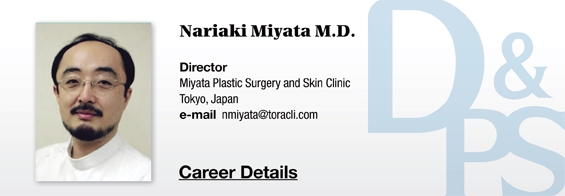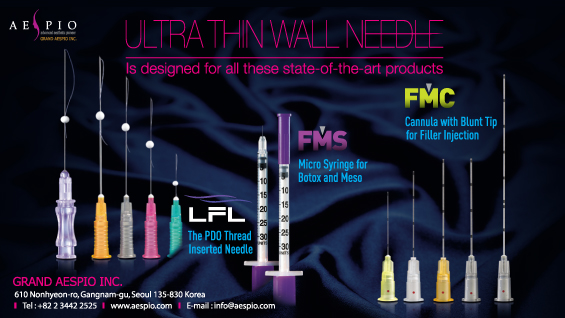
This treatment has no downtime and is convenient ,however, has limited, temporary efficacy. Irradiation of the Q-switched laser does not exceed the thermal relaxation time (TRT) and delivers very low energy. Therefore, I use the long-pulsed alexandrite (Syneron-Candela’s Gentle LASE and Gentle Max). This laser is mainly used in hair removal but has higher absorption in black particles than Nd:YAG and has the pulse duration in the mm second range. It delivers sufficient thermal effect through the medium of carbon oil which causes selective thermal change at the core of the pore, making them contract. The most important aspect here is to clear all impurities from the pores before treatment. As slight abrasion of the surface is necessary to bring visible pore reduction, carbon oil is applied in the surface as well. It is important to adjust the amount of carbon oil to allow only slight abrasion to occur on the surface. Also, use cooling to prevent excessive heating of the skin surface (similar to laser hair removal). If the carbon oil is too thick, excessive thermal damage could occur and adjust the concentration (semi-transparent). I use Cosmedico’s carbon oil which has a low carbon and high oil content.
This treatment requires 5-7 days of downtime. During this period, thin crust forms over the skin as in sunburn but the risk of PIH is very low. Two to three monthly treatments can bring visible difference. The skin of the nose is less responsive and needs 5 treatments as well as combination with fractional laser in some cases.
The skin of the nose if thicker and has more sebum and impurities in the pores. Due to these characteristics, various treatments may turn out to be inefficacious. Insulated needles may be inserted to burn the sebaceous glands but this requires extensive knowhow on the doctor’s part as it could damage the epidermis and result in more pronounced pores. It is true that treatment is unlikely to bring any results in patients with high sebum production.
We have talked about pore enlargement caused by the build-up of sebum and impurities. Recently, more interest is given to age-related pore enlargement. Pores become pronounced mainly in the outer edges of the nasolabial folds. This is caused by sagging of the skin and the superficial fat compartment. The pores enlarge in the shape of diagonally elongated ovals and can be improved when the skin is tightened. Tightening procedures such as fractional laser or Thermage can be effective but may not be satisfactory if the patient has a high expectation. These treatments are ideal in patients who primarily desire pore reduction in addition to the primary objective of skin tightening. As I have said earlier, it is impossible to completely smooth the skin of pores.
[Advertisement] ULTRA THIN WALL NEEDLE – Manufacturer: AESPIO(www.aespio.com)
Personally, I think the Japanese people have larger pores compared to Koreans. The two peoples have similar genetic makeup but among Korean patients I have observed in Korean clinics, the rate of those with enlarged pores was lower in Korean than in Japan. This may be due to ethnic or climatic differences.
Koreans are famous for their flawless skin. This may be due to the diet or the widespread and frequent use of aesthetic treatments in Korea. I think the genes and climate have the largest influence on one’s skin. I wonder what the Korean doctors think of this topic.
-To be continued




















